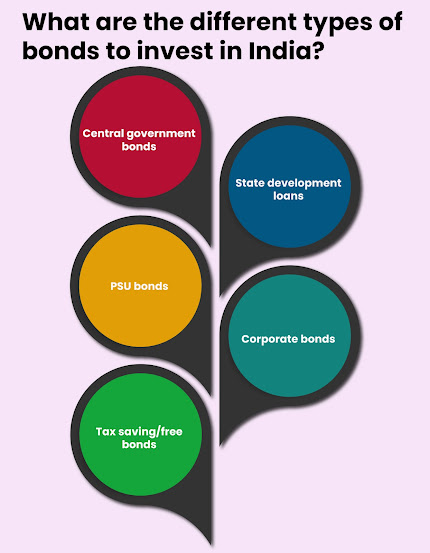How do I choose which bonds to invest in India for the highest return?
Introduction
There is no denying that everyone around us lives in uncertain times. With the pandemic outbreak, ongoing war, and inflation, many individuals are looking for options to make a consistent income.
Bonds and other fixed-income investment products can give this stability while preserving money. Even without the current global crisis, fixed income products are a wise investment because they offer high yield interest rates.
A bond’s potential for growth and yield is an attractive proposition to many investors. However, with the sheer number of bond types available on the market, it can be challenging to make an informed choice.
In this blog, let us highlight a few key criteria that need to be considered when deciding and selecting the best bonds to invest in 2022 India.
Tips to consider before buying bonds
To choose which bonds to buy, consider the following suggestions:
1. Rating
One of the essential factors to consider before choosing a bond to invest in is the credit rating of the bond.
One way to assess the riskiness of a bond is by looking at its credit rating. A lower rating means a greater likelihood that the bond will default and investors will lose their capital. A higher rating means the bond is less likely to default and cause capital loss.
However, bonds with a higher credit rating will have a lower interest rate than lower credit rating bonds because it carries less risk.
2. Maturity
If a bond has a long maturity, it will be more exposed to interest rate risk, and a bond with a shorter maturity will be less sensitive to interest rate risk.
Long-term bonds price will fluctuate more, rising when rates decrease and declining when rates rise.
Usually, long-term bonds come with higher coupon rates as compared to short-term bonds.
So, if bondholders need higher returns, they will have to take more risks.
3. Yield
High-rated bonds have a lower yield, whereas bonds with poor ratings yield more. Thus, when selecting a bond to invest in, a person needs to consider both the bond ratings and the bond yield.
4. Bond Issuer
The bond issuer’s track record and credibility are extremely significant.
Usually, bonds issued by the government carry less risk as the government backs them, and thus they have less risk than corporate bonds.
Therefore, corporate bonds yield a higher return than government bonds.
Thus, before opting for a bond with higher returns, consider the risk level.
5. Risk-Tolerance Level
How much risk bondholders are willing to take on has a big influence on the type of bond they choose to invest in.
If they are comfortable with more risk, lower-rated bonds may be a good option. Conversely, if they prefer to minimise risk, bonds with high credit ratings are a better fit.
With higher risks comes the potential for higher rewards in the form of higher yields, so it is essential to consider one’s tolerance for risk before investing in any bonds.
6. Investment Objective
Before investing in bonds, it is essential to assess the investment objectives and asset allocation strategies. There are numerous types of bonds in the market, so bondholders need to select the one that best meets their requirements.
Thus, follow the above tips to select which bonds to buy to generate higher returns on your investments.
Conclusion
Bond knowledge is extremely low in India. Investors underappreciate the importance and benefits of purchasing a bond. People may be hesitant to invest in bonds due to a lack of understanding of the bond market.
Bonds are a better option than other asset types because they carry lower risk when it comes to stability and safety.
Bonds are often overlooked as potential investments, but they can be a great way to diversify one’s portfolio and our safe investments with stable returns in India.
BondsIndia can help people with questions about bonds, such as the type of bonds to invest in, how to get started investing in bonds, the best bonds to buy in India, bond regulations, etc.




Comments
Post a Comment